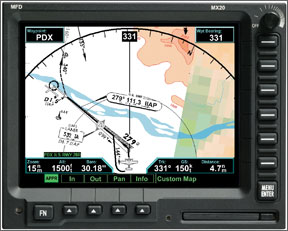Regarding Augusts issue, and Frank Bowlins article, “Short Stuff,” a sidebar discussing Cirrus short-field guidance for the SR20 states, “…and maintain the approach speed by lowering the nose….” Is there something different about the Cirrus that causes airspeed to drop when 288 power is reduced? Bill Foster, No; theres nothing the least bit different about the SR20 when power is reduced when compared to most airplanes. Text in that sidebar is a direct quote of the SR20 AFM/POH. But heres the trick: If youre flying along and reduce power while maintaining the established pitch attitude, what happens to airspeed? It starts decreasing, right? To maintain the desired airspeed, wed want to pitch the nose down, wouldnt we? Depending on how stable the airplane is in its pitch axis, it may naturally pitch down, without pilot intervention; if its unstable, its pitch may not change. This behavior depends on how the airplane is designed and loaded. All the Cirrus AFM/POH is saying is that a good short-field technique requires touching down at the minimum airspeed. To achieve that objective, coordinating power reductions and pitch attitude is necessary for optimum performance. As it is in any airplane weve ever flown, including the Cirrus models. That said, some airplanes require a different technique. For example, airplanes like the Seabee or Lake amphibians-with their single pusher engines mounted on a pylon-respond opposite to other singles when power is adjusted. Instead of the nose wanting to drop when power is reduced, in these airplanes it may want to rise. For a related discussion, see Dave Higdons piece on managing stability on page 12 of this issue. One Of Each Regarding the article “IFR GPS: Good, Bad, or Just Ugly” (August 2009), I have one question and one comment regarding the sidebar headed, “What Makes A GPS Eligible for IFR Operations?” You state an out-of-date database in an IFR-certified GPS cannot be used for IFR navigation. Is this correct? I believe it can be used for en route navigation, but not for approaches. Please clarify. Also, you state, “An aircraft with IFR GPS must be equipped with an approved and operational alternate means of navigation…” Not if the IFR-certified GPS is WAAS 288 certified (not enabled). Thus, an IFR certified WAAS GPS can stand alone as a sole means of navigation. Great article. Love this stuff! Charlie Largay, We shouldnt have made such blanket statements regarding expired databases and whether GPS can be a sole means of navigation. In fact, the individual units operating limitations specifies whats legal and whats not. Vacuum Pumps In August 2009s article about backup attitude gyros, “More Attitude,” you mention in passing that Parker Hannifin quit making vacuum pumps, and left the impression it was because they fail more often. In fact, their decision was made after being named in a lawsuit following the unfortunate crash of a Cessna 335 carrying Missouri Gov. Mel Carnahan and flown by his son. Both Carnahans, plus a campaign advisor, died in the crash. Even though the NTSB did not fault the vacuum pump, a jury decided they should pay anyway. Id have quit making pumps, too. David Goodin,
Via e-mail
Miami, Fla.
Via e-mail




